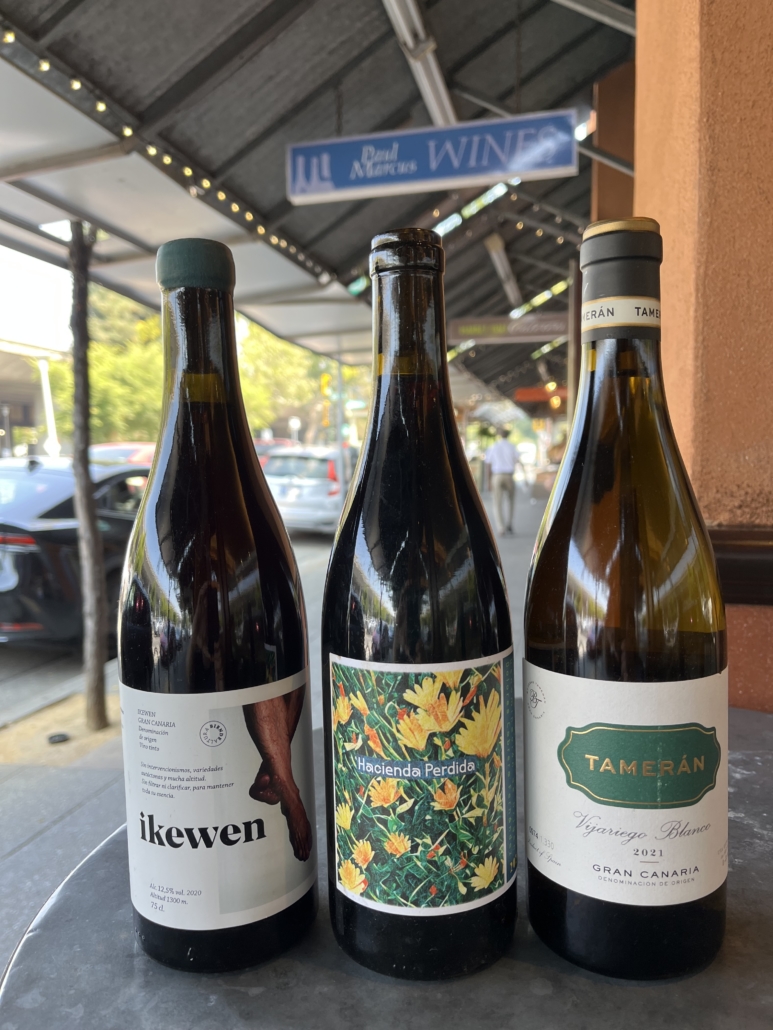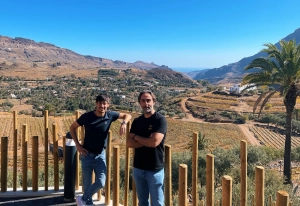 Wine lovers are perpetually in search of the “next big thing.” Discovering “new” wines from lesser-known regions around the world can be an eye-opening experience offering distinct, unusual flavor profiles, unique food-pairing opportunities, and (if you’re quick enough to the game) the prospect of value hunting.
Wine lovers are perpetually in search of the “next big thing.” Discovering “new” wines from lesser-known regions around the world can be an eye-opening experience offering distinct, unusual flavor profiles, unique food-pairing opportunities, and (if you’re quick enough to the game) the prospect of value hunting.
These days, Spain’s Canary Islands represent one of the hippest and most fascinating growing regions in Europe. Located about 100 kilometers west of Morocco, the Canaries are distinguished by its high-elevation vineyards rich in volcanic soils–the islands also avoided the phylloxera scourge of the late 19th century, meaning they are home to some of the oldest ungrafted vines in Europe.
The Canary Islands now include 10 DOPs (Denominación de Origen Protegida). While each island has its own terroir, Canary wines in general are known for their roaring acidity and prominent mineral notes, often produced by smaller wineries in a low-intervention style. Below are three gems that we are currently featuring at Paul Marcus Wines.
2020 Bien de Altura – Gran Canaria – ‘Ikewen’
The grapes for the Ikewen Tinto, made by rising star Carmelo Peña Santana, come from steep, ungrafted vineyards located in a warm and dry microclimate on Gran Canaria. The old-vine blend is mostly Listan Negro and Listan Prieto, along with a few co-planted white varieties. After a long 40-day maceration, the juice ages for eight months in steel tanks. The resulting wine is bright and energetic, peppery and a tad savory, with enough earthy notes to keep it grounded. Bring on the carne fiesta–the spicy, garlicky marinated pork dish that is a favorite in these parts. The Ikewen is bold enough to hold its own, yet its low alcohol and low tannins won’t clash with the piquant flavors of the meal.
2021 Dolores Cabrera Fernández – Valle de la Orotava, Tenerife – ‘Hacienda Perdida’
The Valle de la Orotava appellation is located on the north coast of Tenerife, the largest of the Canary Islands. This region features a traditional vine-training style known as cordón trenzado, or “braided cords,” a labor-intensive, horizontally oriented system in which the vines can stretch as far as 50 feet wide. Dolores Cabrera is a master of the cordón trenzado system, and it shows. This high-toned mix of Listan Negro and Listan Blanco emanates from Hacienda Perdida, her highest parcel in Orotava, and it boasts a vigorous mineral streak, a hint of reduction, and a whiff of funk–all tied together with some gorgeously supple yet surprisingly lush fruit that lets you know that there is some clay among the volcanic soils.
2021 Tamerán Vijariego Blanco – Gran Canaria

David Silva and Jonatan García of Tamerán
Fans of European football will recognize the name David Silva, the stalwart Spanish midfielder who helped bring home two Euro titles and a World Cup for the national team. A native of Gran Canaria, Silva enlisted the help of Jonatan García (of Suertes del Marqués fame) when he founded his winemaking project a few years ago, focusing on a handful of rare, native Canarian grapes. This bottling is made from the obscure Vijariego Blanco grape, and it is truly a revelation. Aged on the lees in 500-liter barrels for nine months, this wine is quite a bit more textured and ripe than most Canary whites while still showcasing the mineral snap that is the region’s calling card. Thus, it is rich enough to stand up to heartier, more flavorful cuisine, without sacrificing anything in the way of freshness or elegance. It’s not every day you find this level of intensity and complexity for less than 50 bucks.
To learn more about these wines and a host of other Canary Island offerings, please visit us at the shop.

Leave a Reply
Want to join the discussion?Feel free to contribute!